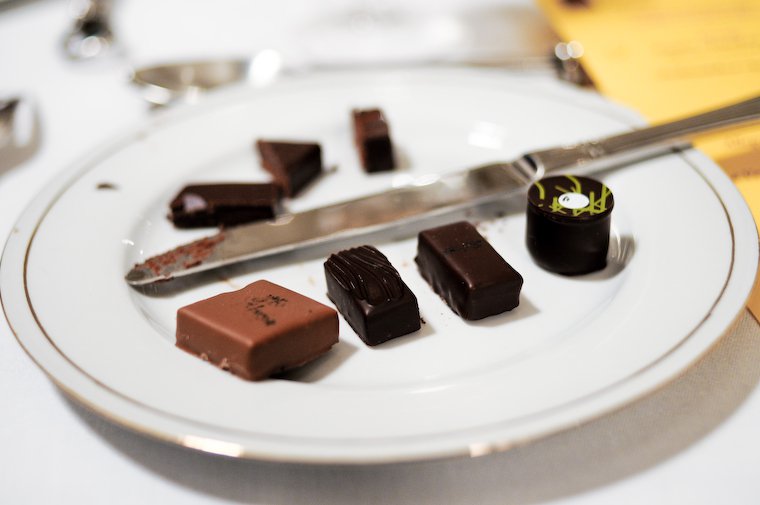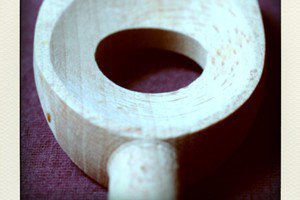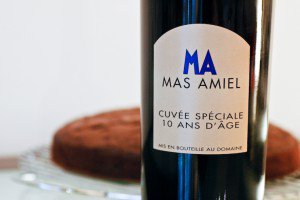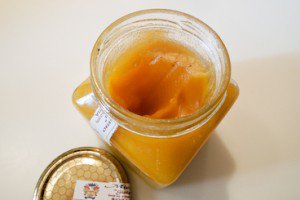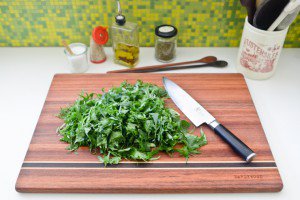A little over a year ago, I received the kind of phone call that makes you beam for hours on end, unable (and not really willing, either) to peel the smile off your face: I had just been admitted as a member of the Club des Croqueurs de Chocolat, a famous French chocolate appreciation society I’d been dreaming of joining for years.
Created in the early eighties, when chocolate and chocolatiers didn’t get nearly as much attention and respect as they do now, the Club aims to bring together chocolate enthusiasts for tastings, promote the worthiest of artisans, and share its findings with non-members via a website, yearly awards, and a guide to France’s best chocolatiers.
The Club has one hundred and fifty members at all times. Some of them are food professionals — chocolatiers, pastry chefs, restaurateurs, writers, journalists… — but many are from completely different walks of life — fitness coaches, historians, nurses, photographers… — their only common denominator being a long-standing passion for chocolate.
It can take a while to get your foot in the door of this particular Club, as you have to be sponsored by two current members, write a letter of motivation, and then wait for a seat to become available. But I think the format can be adopted by any group of friends or coworkers committed to fueling their chocolate obsession, so I thought I’d tell you about it in a little more detail in case it inspires you to create your own local society.

The tastings are held every other month around a particular theme (chocolatiers from Japan, fruit and herb pairings, chocolates flavored with tea, coffee, or alcohol…) and at each meeting we taste about a dozen chocolates, usually from as many different chocolatiers, as listed on the day’s programme handed out to each member.
Most often it’s what chocolatiers call bonbons de chocolat, i.e. chocolate bites garnished with a ganache, praline, or fruit filling, but the occasional session is devoted to other types of chocolate items, such as chocolate mousses, chocolate ice cream, or bûches de Noël.
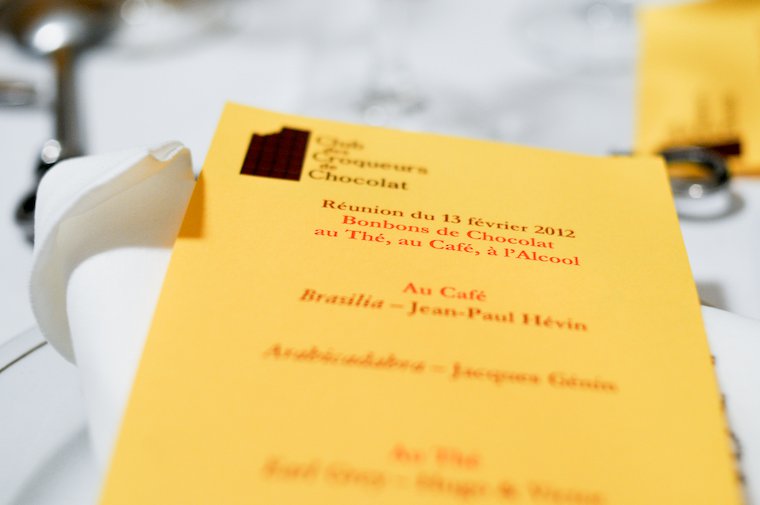
We sit in freely assembled groups at large tables, and the chocolates are brought in batches of three or four on serving plates, one piece of each kind for each person at the table. The host — it’s usually Club president Jacques Pessis — announces which chocolate is which, we help ourselves, and then it’s tasting time!
Each member has his own M.O. I like to slice each chocolate bite in half to look at its inner construction, and to be able to get a first taste of it, and then a second if I feel like it needs more investigation. It also means I only eat half of some, which is important if I want to last through the entire tasting with fresh taste buds. I jot down some notes, too, with a tiny sketch of the chocolate and whatever strikes me about it.
(You can also read my related post on How to taste chocolate.)
In between chocolates, we cleanse our palate with glasses of fresh still water and/or bites of Poilâne bread — Apollonia Poilâne sits on the Club’s board, and is among its most active members.
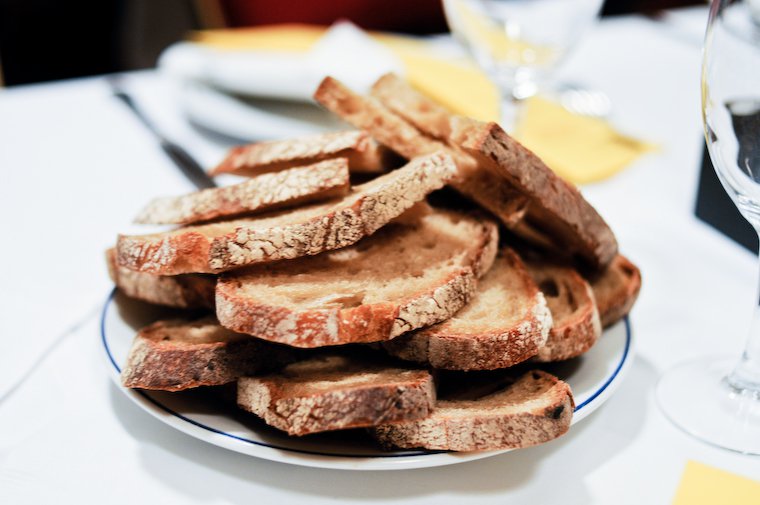
After each batch, we discuss our thoughts and opinions on the flavors, textures, strength, subtlety, and balance of what we’ve just tasted, before the host says a few words to the whole room, and prompts comments from the tables. All artisans are invited to attend the sessions, and when they’re able to, we get the chance to listen to them discuss their craft, which is always a treat.
Naturally, tastings of this scale are made possible because the Club is now over thirty years old and well established. It would be harder to pull off such an organization if you’re just starting out as a group of motivated friends, but the format can be certainly be simplified and adapted to your means and access.
Perhaps you can visit a single chocolatier from your area and make a selection from his creations, or have your members bring back samples from local chocolatiers when they travel. You can also place orders online, or you can do a comparative tasting of the chocolate bars — gourmet and/or mainstream — available at the stores near you.
The point is to have a good time, but be serious about the tasting itself: ideally, you would see it as an opportunity to educate your taste buds, not gorge on chocolate willy-nilly. You’ll benefit from the insights and opinions of your tasting companions, and it is also a good way to share the costs of procuring hard-to-find or special-order chocolates you might not otherwise justify buying just for yourself.
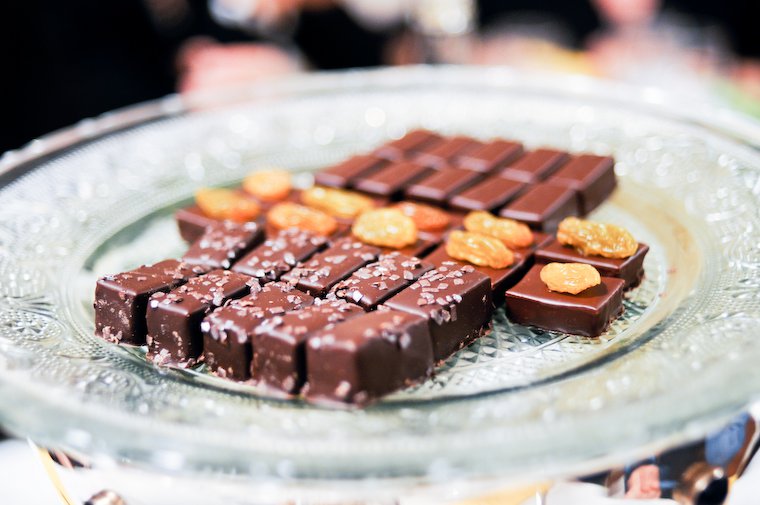
From a practical perspective, you should hold the tasting in a well-ventilated, well-lit, smell-free room, not too cold and not too hot, in late morning or early evening when you’re just a little hungry, but not ravenous. It’s best to avoid drinking coffee or smoking before (or worse, during) the session.
Do you belong to any similar club, and is this something you’ve considered before, on the subject of chocolate or other fine foods or beverages*? I’d love to hear about your experience!
(You can also read my related post on How to taste chocolate.)
* Beyond the classic tastings of wine, beer, or other alcoholic drinks, you can group-taste pretty much any kind of product, as Louise does on her blog Raids Pâtisseries, or the Figaroscope team with its regular palmarès.


